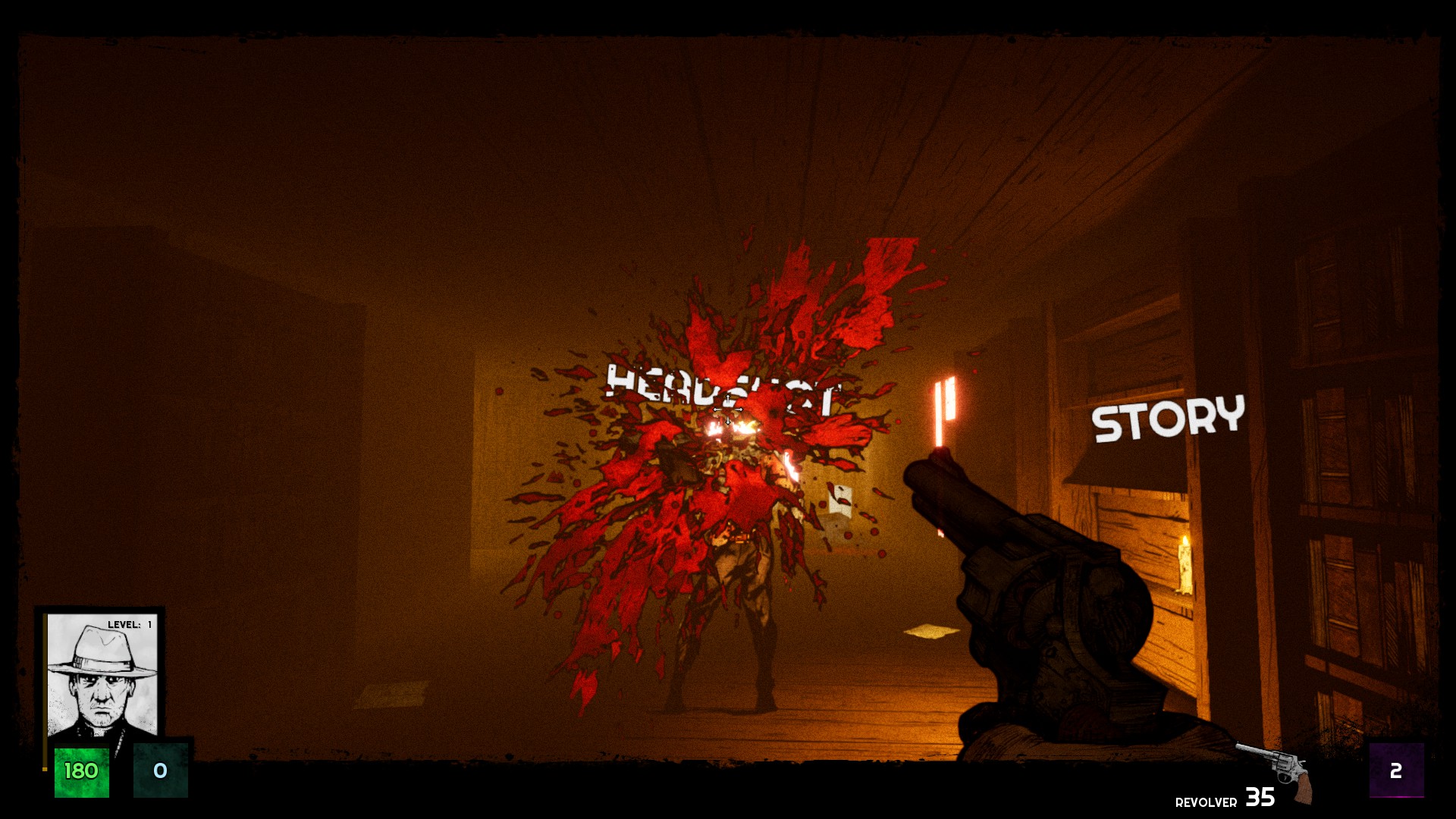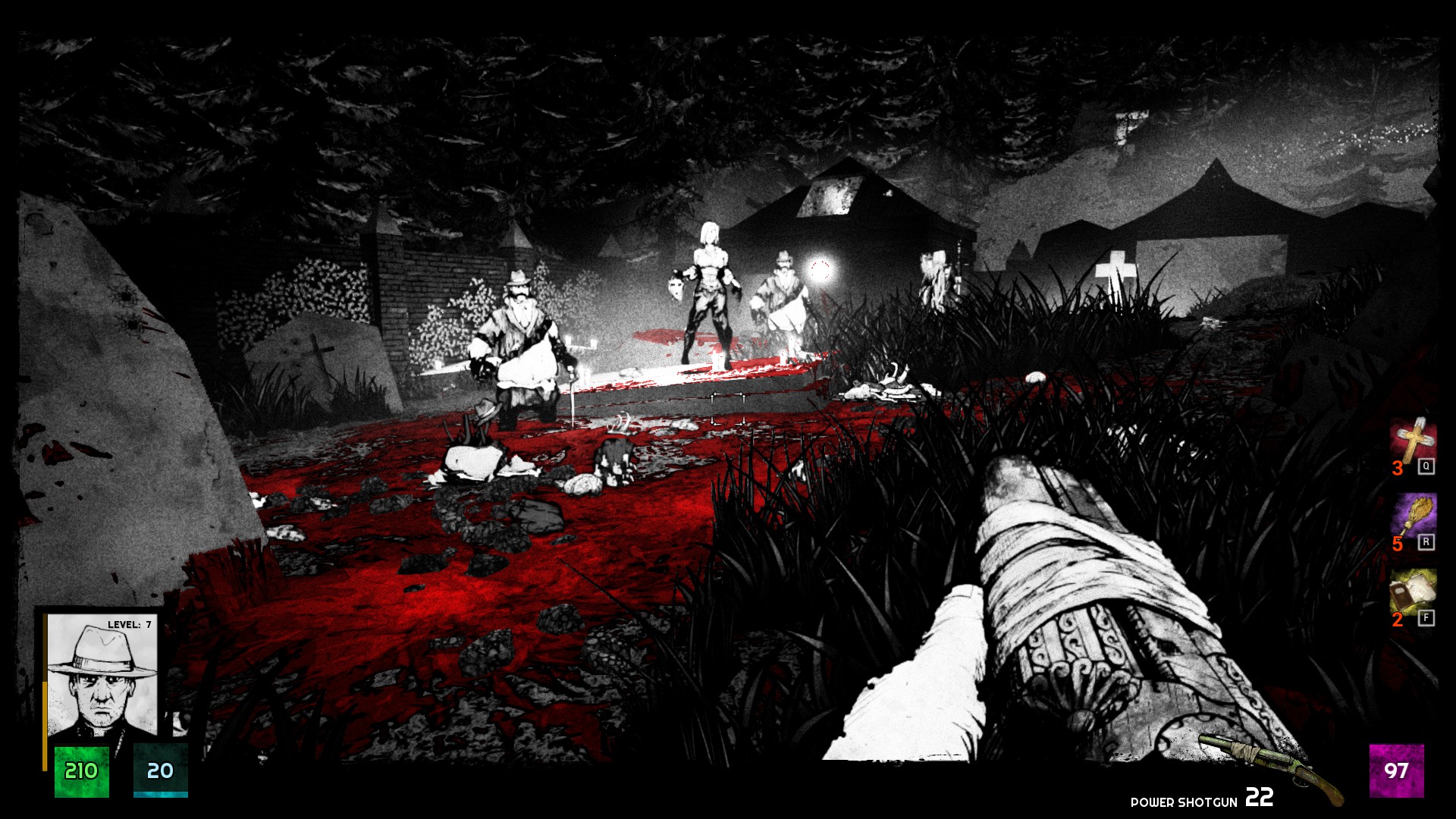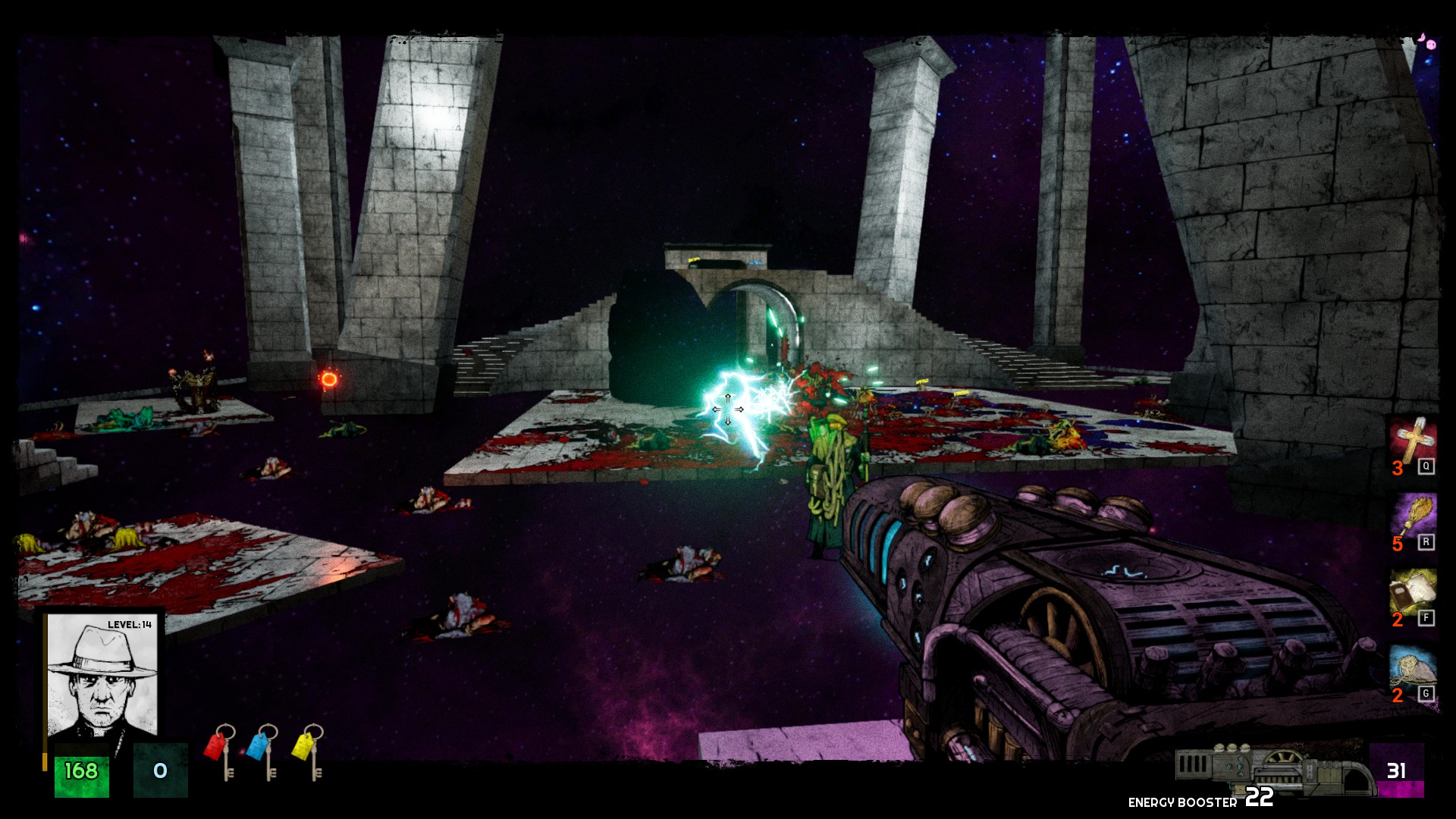Only God forgives, but the gods in Forgive Me Father don’t seem the forgiving types.
Boomer shooters! They’re popular right now. If you aren’t familiar with the term, it’s simply a comical expression for first person shooters with retro mechanics. We’ve actually looked at a few in the past here, from the stunning Dusk to the significantly less stunning Spaceguy 2. With so many classic FPS games out there, it’s no surprise that this has quickly become a popular genre, and I’ve recently been playing through the Lovecraftian themed Forgive Me Father, a game that reminds me of genre classic Blood, but with fewer weapons and a handful of RPG mechanics — can’t have a modern game without RPG mechanics can you? Let’s see how it gets on.
Once you’ve chosen your character, either a journalist or a priest, you’re told that your cousin has urged you to come and visit them urgently. Hopping on a train, you follow his instructions and arrive at his 1920s era apartment. He’s missing, of course, and you’re almost immediately beset by zombies. You’ll need to fight your way through towns, forests, and shipyards to find out just what the hell is going on. In a style similar to Lovecraft’s books, the story isn’t entirely clear, but there are notes you can find that might help you piece it together.
With that said, the story was absolutely not my main focus here, as the combat in Forgive Me Father is frequently exhilarating. There’s a large array of different enemies to face, each with their own strengths and weaknesses; you’ll constantly be on your toes as you move from arena to arena taking on swarms of foes. Hulking crab monsters will be paired with teleporting cultists and shambling zombies. Those zombies have a cute feature where they carry severed heads, and if you kill them with a headshot, they’ll pop the one they’re carrying on the neck stump unless you’ve already shot it out of their hand. It’s a small thing but I loved that attention to detail.

Combat is fast paced and thrilling, as you’ll have a lot of targets to deal with at any one time. Your movement speed is high enough to keep you out of trouble if you’re careful, but you’ll need to manage threats effectively. Those enemies rushing you down are a problem, but a cultist teleporting behind you could be an even bigger one. Learning which foes to take out quickly is essential, as death can come quickly, even with your health and armour at maximum. Thankfully, you have weapons that are more than powerful enough for the job.
The weapon array isn’t stunning at first glance. You have your standard pistol, machine gun, and shotgun — which is an absolute killer and incredibly satisfying to use, I should add — alongside a harpoon gun and an eldritch looking rocket launcher. The levelling system allows you to customise these in interesting ways though. You can turn that harpoon into a multi-shot crossbow, and your assault rifle can start firing explosive shots. These features won’t set the world ablaze, but it’s nice to be able to replay the game with quite a different loadout depending on how you spend your points. Points are doled out fairly quickly early on, but by the fourth of the game’s five acts they really started to dry up. In fact, in the last two acts I think I may have levelled up only once, and that’s even with the XP bonus skill unlocked. It feels quite limiting as there’s a lot of the skill trees that I left thoroughly unexplored.
Those points can also go on to buffing your character’s abilities. Each character has unique skills, such as the priest’s necronomicon bestowing brief invulnerability, and the journalist’s explosive voodoo doll. Spending points makes these more effective, but the priest abilities are just out and out better. His healing just happens, whilst the journalist equivalent requires hitting an enemy with a precision item. Her ability to briefly slow down time is good, but out and out invulnerability is significantly more useful. It’s a shame that these aren’t more balanced, but you could always think of the journalist as hard mode.

Now for what really had me interested in Forgive Me Father; that art style is gorgeous. It feels like a combination of Blood and The Darkness 2, with lots of well designed enemy sprites, all with really interesting colour schemes. They have an almost cel shaded look to them that draw the eye when they appear, and this goes even more so for the five bosses you’ll take on. There are the occasional problems though, as sometimes they get lost in the melee, especially when your madness effect — a skill that increases your damage and defence as you fight lots of enemies at once — triggers, and sets the screen to greyscale. This can be switched off in the menu though, which was a wise decision by the developers. You can’t switch off the blood though, and there’s a lot of claret to spill, so much that it can obscure what enemies are doing. I would often get damaged by crab men because I couldn’t see them winding up for their attack through all the blood that was flying out of them. Learning timings and sound cues fixed this for me a little bit, but I don’t think it should have been such a problem in the first place.
The sound is great thanks to some really meaty sounding weapons and squelchy sounding foes. You’ll pick up on little details such as what noise an opponent makes when they teleport, or the squeal of an explosive barrel monster as they’re all unique enough to hint at what’s going on out of your field of view. It’s well done and shows that attention to detail I previously mentioned. Then there’s the soundtrack which is just wonderful. From atmospheric rhythms as you skulk through corridors to full on Doom-esque metal blaring from your speakers during combat, it’s always thematic and adds to the experience in just the way music should.
At around six hours, Forgive Me Father sounds short, but it felt like just the right length, with most stages being fairly short thanks to well designed layouts. Mostly good checkpointing means little backtracking when you inevitably die, but there are difficulty spikes here and there when the developers occasionally decide to leave long gaps between those checkpoints. The last act in particular is a bit of a pain in some of the levels, with a sudden insistence on first-person platforming, which is never fun.

Aside from those occasional missteps, I had a fantastic time playing Forgive Me Father. It’s just the right side of challenging and has combat that doesn’t get stale by the end, with bosses that are a real highlight. This is a genuinely excellent retro-style shooter with great presentation that shouldn’t be missed by fans of the genre. If you miss out on this one, you’ll never forgive yourself.
Forgive Me Father is available now on Steam.
Comments are closed.